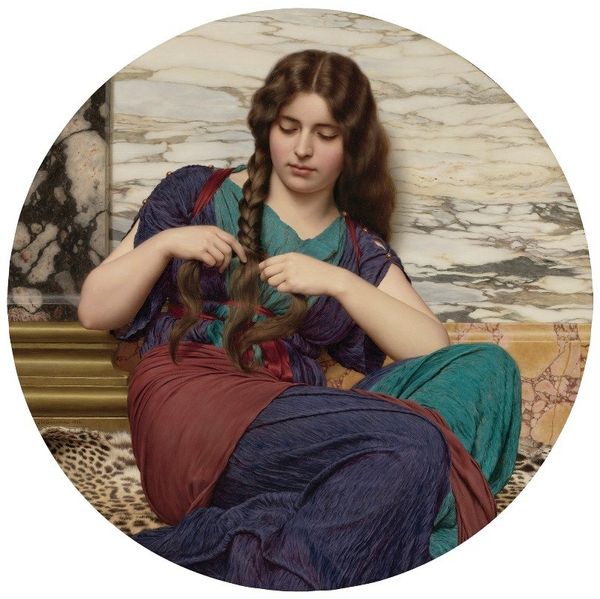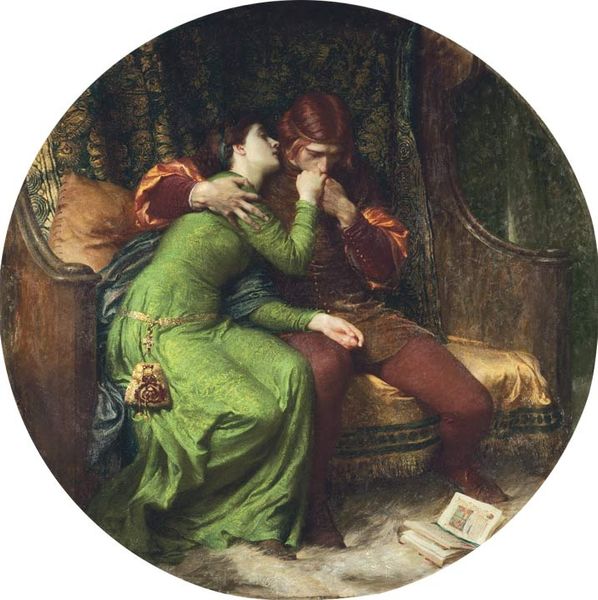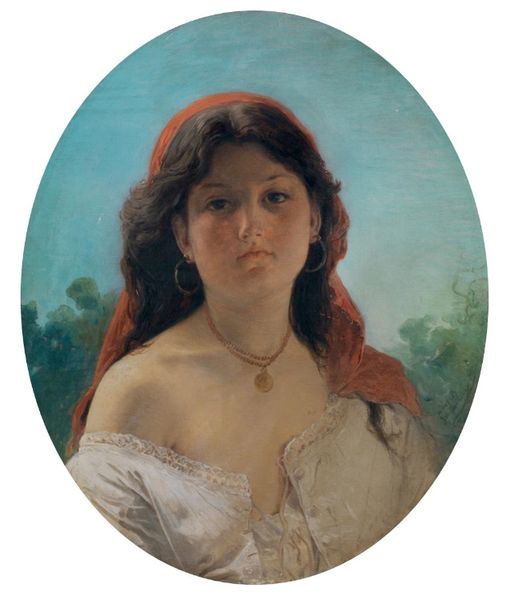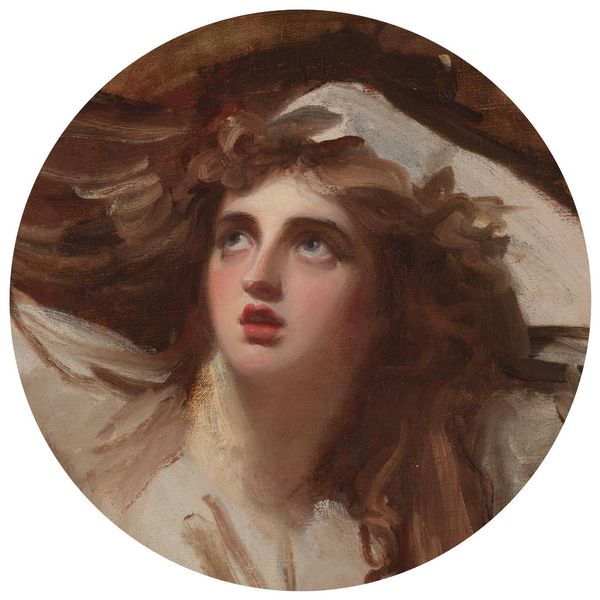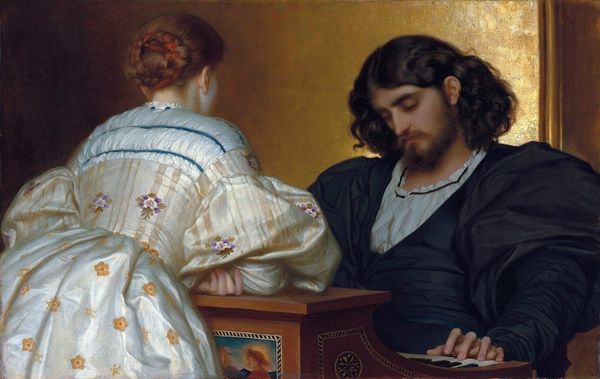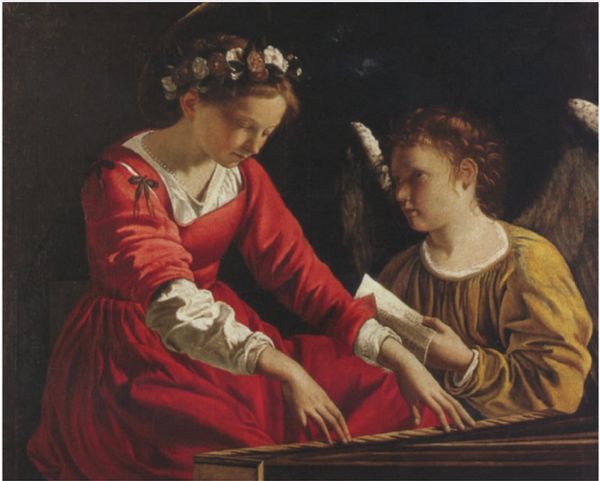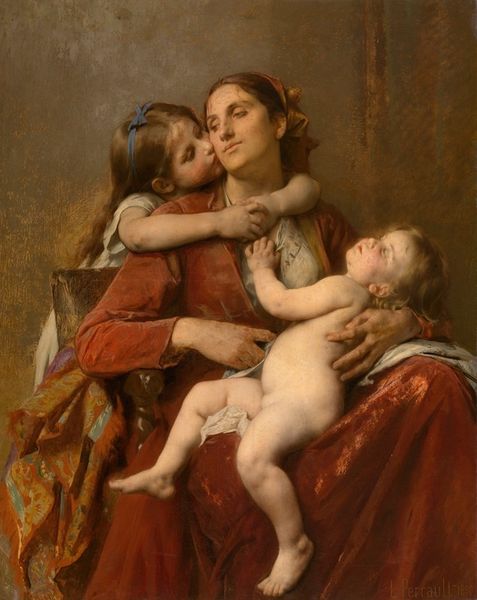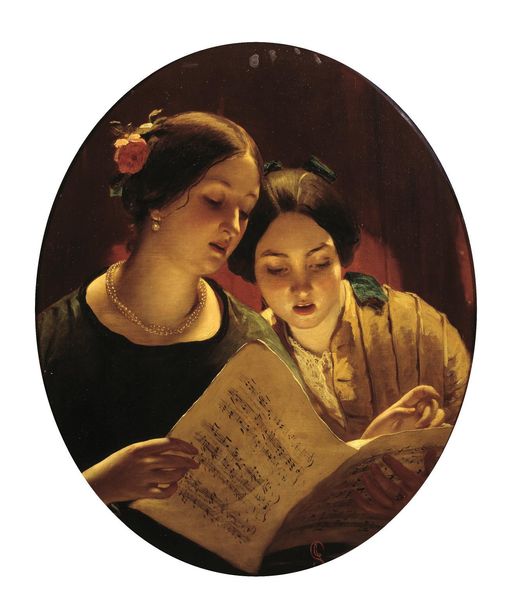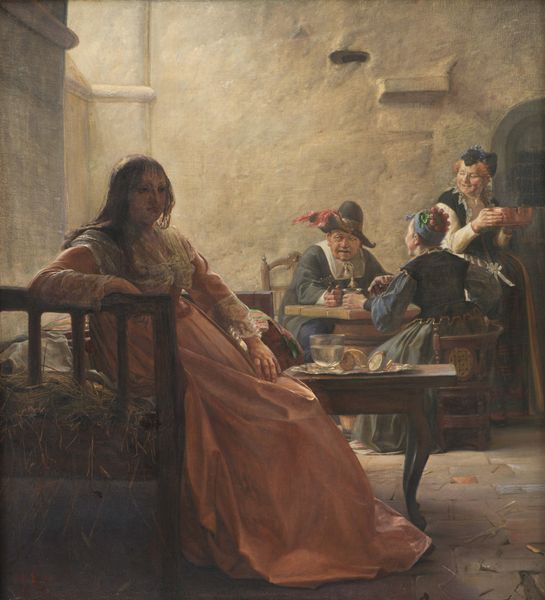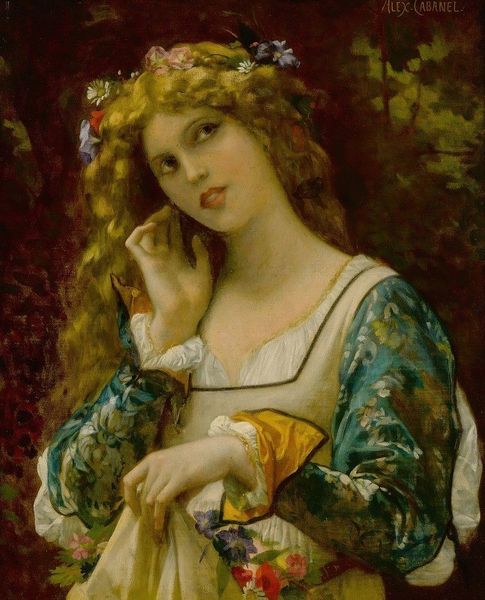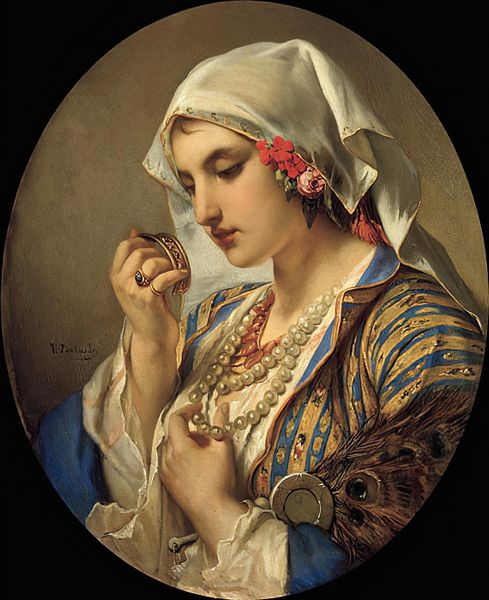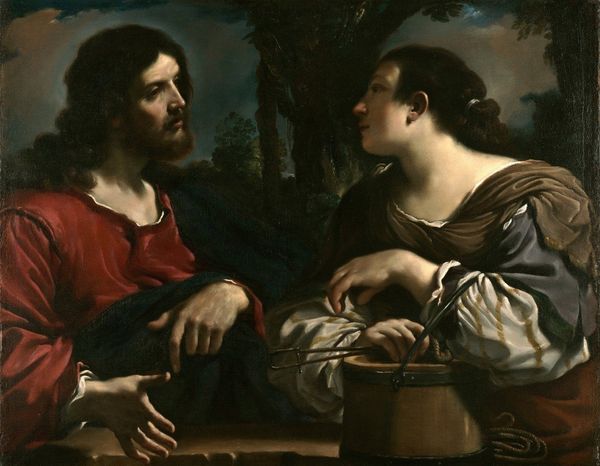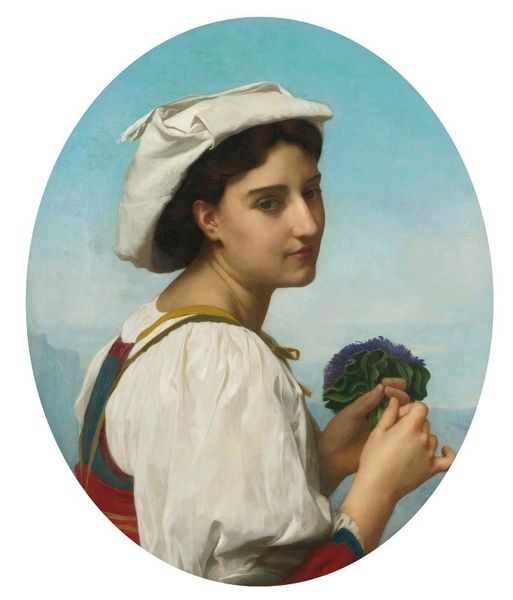
painting, oil-paint
#
portrait
#
figurative
#
fancy-picture
#
painting
#
oil-paint
#
figuration
#
intimism
#
romanticism
#
genre-painting
#
portrait art
Copyright: Public Domain: Artvee
Curator: Here we have Friedrich von Amerling’s painting, "Die drei kostlichsten Dinge", or “The Three Most Precious Things,” completed around 1838. Editor: The title makes me want to dive in. Visually, there's a warmth and intimacy that draws me closer—a very personal atmosphere that makes you feel like a fly on the wall witnessing something private. Curator: The artwork seems like an intriguing commentary on courtship during the Romantic period. Do you see hints of materialism here? Editor: I immediately noticed the detail in the glass held by the female figure. The goblet’s craftsmanship speaks to an investment in luxuries. Plus, the way the fabric of her dress and his tunic are rendered--there’s a definite appreciation for the tactile experience of materials and likely, a reflection of available resources. Curator: And what about the presentation itself? The carefully arranged flowers and the presence of a musical instrument, a lute, suggests courtship rituals as a form of symbolic display and social transaction, do you see anything in that? Editor: Precisely! The lute and roses aren't just ornamental, they are active players. The materials chosen for the lute, its strings, the wood—their origin, quality, and the labor involved would say much about its owner's status and the type of serenades and performances one might expect. Even the pigment used for her dress: that distinctive yellow—was it costly? Curator: It raises questions about who commissioned this work. Was it a record of an existing relationship, a prospective alliance, or perhaps an aspirational vision of bourgeois domesticity, what do you think? Editor: All viable angles. To consider the social narrative: could this have been intended as a display piece for a salon or perhaps for a specific patron wanting to flaunt the symbols of wealth and refine artistic taste? The composition certainly encourages dialogue about what society considered 'precious' during that time. Curator: In terms of the "three precious things", it begs the question of interpretation. Is it love, beauty, and music or perhaps wealth, status, and beauty represented within the painting itself? Editor: It could easily be interpreted in many different ways depending on who is receiving and viewing the artwork, or even at which time it is viewed. All I know is that now I’m pondering the socio-economic factors interwoven into every deliberate artistic decision—the art isn’t just pretty—it’s a mirror. Curator: Absolutely. Friedrich von Amerling, it appears, prompts a deeper reflection into 19th-century culture beyond mere aesthetics.
Comments
No comments
Be the first to comment and join the conversation on the ultimate creative platform.
